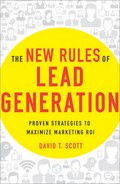Determining Customer Value
Once you’ve figured out the overall cost of turning a lead into a sale, you need to figure out the ROMI (if any) to your company from acquiring that customer and making the sale. You can do this in two ways. First, you can assess the overall CPA against the purchase value of that single purchase. Second, you can assess the overall CPA against the lifetime value (LTV) of that customer.
It’s a common notion among marketers that the cheapest actionable leads you can obtain are the most cost-effective. If you are selling a product for $100, it seems logical to use a tactic that generates actionable leads at an overall CPA of less than $100. A tactic with a CPA of $5 per acquired actionable lead might be ideal.
Some lead-generation tactics, of course, will never be that inexpensive, but in some cases, they don’t need to be. If you use the concept of the lifetime value of your customers, you can apply the CPA not just to a onetime sale but to every purchase the customer makes from then on. By using the LTV assessment, you can sometimes get higher-quality leads by paying a bit more money. If you think in terms of LTV, you may decide to use a lead-generation tactic that will cost a bit more but that still provides you with a good ROMI.
For example, say you own a company that creates and produces DVD video training courses for other companies. You have a five-DVD sales training package that you sell for $200, and your margin on the DVD is $100. You might argue that your CPA therefore needs to be less than $100.
But what if the buyer is a company that has a regular, ongoing need for the kinds of training videos you provide? Over the long run, they could be a very loyal customer and might conceivably buy a $200 DVD package from you every month. That customer is now worth $2,400 per year to you. And your CPA could be more like $1,200 because the value of that customer goes far beyond a single sale.
Companies like BMW have embraced this concept of LTV and have incorporated it into their marketing efforts. When you buy a BMW, the company looks at you as a customer whom they have acquired for life, hoping you will buy every car you will ever own from them. They spend money to keep you engaged as a valued customer through customer events, touch points such as letters and gifts, and other means.
When I leased my BMW, I received a hat, a shirt, and a coffee mug with the BMW logo on it. Over the term of the lease, I received branded BMW magazines with reports on new car models, customer testimonials, and travel articles (e.g., “Driving the Swiss Alps in your BMW”). BMW also entered me into various drawings for road trip excursions in Europe. Also, a friend of mine who had just bought a BMW roadster received a set of branded luggage that fit perfectly in the trunk of her new car.
All of these efforts were designed to keep me and my friend as lifetime customers. By keeping you engaged and by continuously measuring your satisfaction with their product and their company, BMW lets you know that they appreciate your value as a customer. They want to increase the likelihood that you will continue to buy BMWs for the rest of your life.
